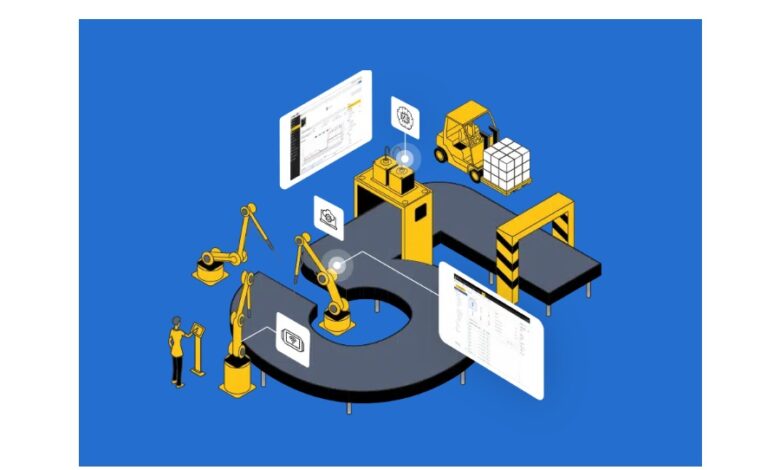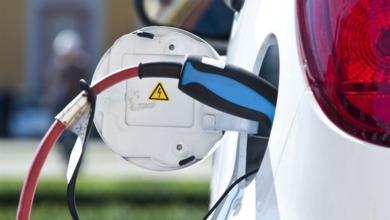Process and Control Today | Connected Reliability: The Engine Behind Electric Vehicle Market Expansion

30/05/2024 Fluke Reliability Solutions
Connected reliability helps manufacturers meet the growing demand for electric vehicles by reducing downtime, boosting efficiency, and proving compliance — keeping them ahead of the curve.
The electric vehicle revolution is here, and it’s picking up speed. The number of electric vehicles on the road is expected to reach 16.84 million in 2024 with this momentum only set to accelerate with the sector forecast to grow at a compound annual rate of 15.9% between 2023 and 2035.
Advancements in battery technology, improved charging infrastructure (there are 2.7 million public charging points worldwide already), and a shift towards eco-friendly transportation as climate concerns rise have all pushed electric vehicles to become a widely recognized and sustainable option. Government incentives and falling prices have also encouraged more consumers and businesses to opt for electric cars, boosting the market’s growth.
However, this surge in demand is creating opportunities—yes, but challenges too —for manufacturers. With limited resources, they must manage multiple production tiers, secure the availability of specialized spare parts, and comply with stringent health and safety regulations. This complexity adds considerable time and cost pressures, challenging OEMs to find new solutions to optimize their production processes.
With automotive manufacturers under increasing pressure to achieve more with less, connected reliability steps up to take the pressure off.
Connected reliability creates a smarter approach to electric vehicle maintenance by integrating IIoT sensors such as Fluke 3563, condition-monitoring software and a computerized maintenance management system (CMMS) – a setup that gives manufacturers the foresight to perform preventive maintenance, mitigating the risk of costly machine failures and production halts delays while boosting efficiency. This is how you keep the wheels turning without breaking a sweat.
Condition Monitoring for Electric Vehicles
Given the complexity of electric vehicles and their components, the pivot from reactive to proactive, data-driven maintenance enabled through condition monitoring is a significant advantage for automotive manufacturers.
Traditional maintenance practices based on fixed schedules or reactive approaches often fall short of meeting the demands of electric vehicles. Because these vehicles have complex electrical and mechanical systems, conventional approaches can lead to inefficiencies and increased downtime — an outcome manufacturers can’t afford. Given that downtime in the automotive industry can cost an average of $22,000 per minute, these inefficiencies can quickly escalate into significant expenses.
Indeed, studies have shown that companies spend around 80% of their time reacting to issues rather than preventing them. Condition monitoring, in contrast, provides continuous oversight, allowing manufacturers to catch problems early and avoid costly disruptions.
With sensors tracking critical indicators, manufacturers can monitor equipment health and detect issues immediately. This approach helps tackle common electric vehicle maintenance challenges like battery degradation, which can occur due to extreme temperatures; electric motor breakdowns often stemming from overheating or mechanical faults; charging infrastructure issues arising from defective equipment; and software or electrical system malfunctions.
For example, battery system sensors can track voltage, current, and temperature to monitor a battery’s charge and health. This information allows manufacturers to detect issues like extreme temperatures or power fluctuations before they cause equipment failure or loss of power.
Clearly, there’s a lot that can go wrong when it comes to electric vehicles. But also clearly, with condition monitoring, manufacturers can stay one step ahead, catching issues early and keeping production on track. It’s like having a crystal ball for your electric vehicle maintenance, except it actually works.
To turn this insight into action however, you need a reliable system to manage and schedule maintenance — that’s where a CMMS steps in.
CMMS-enabled Predictive Maintenance
By incorporating real-time data from condition monitoring and establishing performance baselines, a CMMS can detect deviations from expected behavior, indicating potential faults or degradation before they become visible. With thorough analysis and machine learning algorithms that use historical data, a CMMS can even predict the issues that might develop and anticipate which equipment might need attention and when. The software will then automatically trigger an email alert for facility leaders or generate a work order when limits are exceeded so that technicians can perform preventive actions at precisely the right time.
A CMMS’s suite of features plays a critical role in this process. Electric vehicle maintenance teams can use the asset management functionality to consolidate all their information in one place. With a detailed maintenance history and active status of each asset at their fingertips, facility leaders have better situational awareness and can better plan, prioritize, and schedule targeted actions. This means that technicians are on the job before costly downtime begins to fix issues and extend an asset’s lifecycle, which leads to increased productivity and profitability.
For instance, when one manufacturer of custom fire trucks and other rescue vehicles implemented a CMMS, the company saw a work turnaround increase of 33% and the in-time completion rate for PMs rising to 85%. This is the advantage of a CMMS: it turns what used to be a guessing game into a well-organized, efficient process.
Another essential feature is MRO inventory management, which gives teams real-time visibility into parts and supplies. Leaders can therefore make sure that specialized EV systems and components such as electric motors, battery packs, and power electronics are readily available when needed, keeping operations moving and maximizing cost savings.
A CMMS also offers customizable reporting and dashboards, breaking down siloed operations and revealing the bigger picture of asset health and production metrics. For example, a tire retailer and automotive service provider used a CMMS to benchmark performance across 36 retail locations. By tracking and analyzing work orders, response time, and parts costs, the company could identify which locations were performing less optimally and why. Machine learning algorithms in CMMS can then help to identify best practices and eliminate failure patterns – guiding teams toward continuous improvement.
This interconnected approach is crucial in sectors like electric vehicle manufacturing, where equipment reliability directly translates into profitability. Indeed, with it, manufacturers can realize significant results: a 25-30% drop in maintenance costs, a 70-75% reduction in breakdowns, a 35-45% decrease in downtime, and a 20-25% increase in output.
Cloud-Based, Real-Time Communication
Building on this foundation, cloud-based, real-time communication from a CMMS brings additional benefits for electric vehicle manufacturers. Data stored and analyzed in the system can be accessed by all teams, regardless of location, allowing for seamless collaboration across the organization. This creates a smooth information flow, enabling global skill-sharing and quicker problem resolution.
Regulatory and Safety Considerations
A CMMS can also help companies meet regulatory and safety requirements. Electric vehicles are subject to various regulations and must comply with national and international industry standards, such as those of the International Automotive Task Force.
Take the Federal Motor Vehicle Safety Standards (FMVSS) as an example. These standards, set by the National Highway Traffic Safety Administration (NHTSA), cover a range of safety issues. FMVSS No. 305, for instance, requires that high-voltage battery packs be isolated from low-voltage systems, especially during crash events, to prevent electrolyte spillage and electrical hazards. Manufacturers can test this isolation and demonstrate compliance because a CMMS automatically tracks and documents every procedure and work order. Facility leaders can pull this data from the system to generate reports for auditors, assuring adherence to safety standards and guaranteeing consumer protection.
A Sustainable Future with Fluke Reliability
As the world shifts toward sustainable transportation, the stakes for reliable and efficient maintenance are higher than ever for manufacturers. Connected reliability will be increasingly vital in giving them the confidence and tools to keep production lines running smoothly and powering preventive maintenance to avoid downtime.
Process and Control Today are not responsible for the content of submitted or externally produced articles and images. Click here to email us about any errors or omissions contained within this article.



